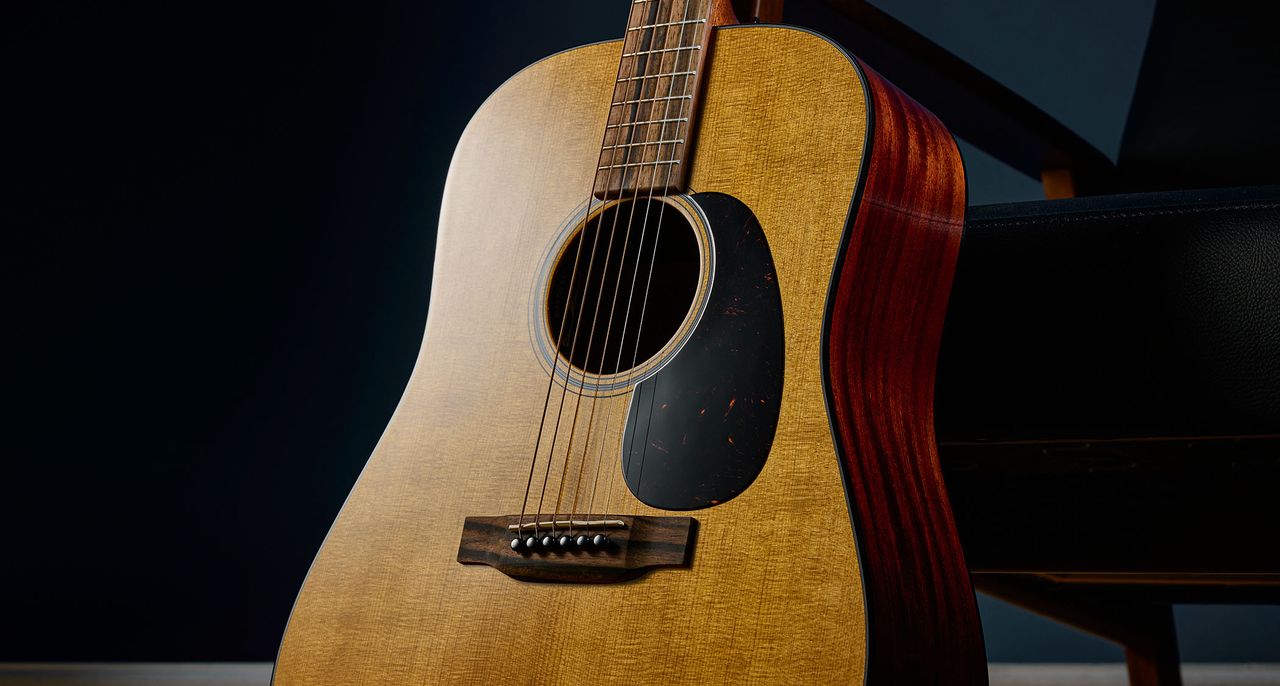
What is it?
If you know your Martin guitar models, you might initially say, “Oh, it’s a D-18 but with an unusually grained fingerboard and bridge.” Well, no, it’s not a D-18, but it’s certainly a dreadnought and follows that legendary model’s features pretty closely.
As for the fingerboard and bridge, like the D-18 they’re ebony, although here it’s ‘striped’. Striped ebony is just as hard and just as toneful as the pitch-black variety, and those markings are merely due to the fact that Martin is happy to use different cuts of timber from the same Gabon ebony tree.
Company chairman, Chris Martin, elaborates: “Striped ebony is a sustainable option because harvesting it involves the utilisation of all parts of the tree. The streaks appear due to the species’ light-coloured heartwood; by using the lighter colour, we can employ more of the harvested wood.
Using all colour variations allows for more lumber from the tree to be transformed into guitar parts, keeping the harvesters and mills from scrapping more material and putting more money into their supply chain. Less wood scrapped means fewer trees are cut down.”
There’s really nothing not to like about that, is there? We will mention, though, that not all Retro Plus guitars’ ’boards and bridges have as much going on as this one, so if the multi-coloured look is not your thing, just shop around until you find one that’s more to your liking.
Another important fact about Road Series models is that they’re made in Martin’s factory in Sonora, Mexico, where the company has had an operation since 1989. The use of this Mexican production base reduces the price of these guitars massively, from around $2,899/£3,000 for a Nazareth-built D-18 Standard (with no pickup), to $/£1,899 for a stage-ready Retro Plus (that you shouldn’t be scared to take out on the road).
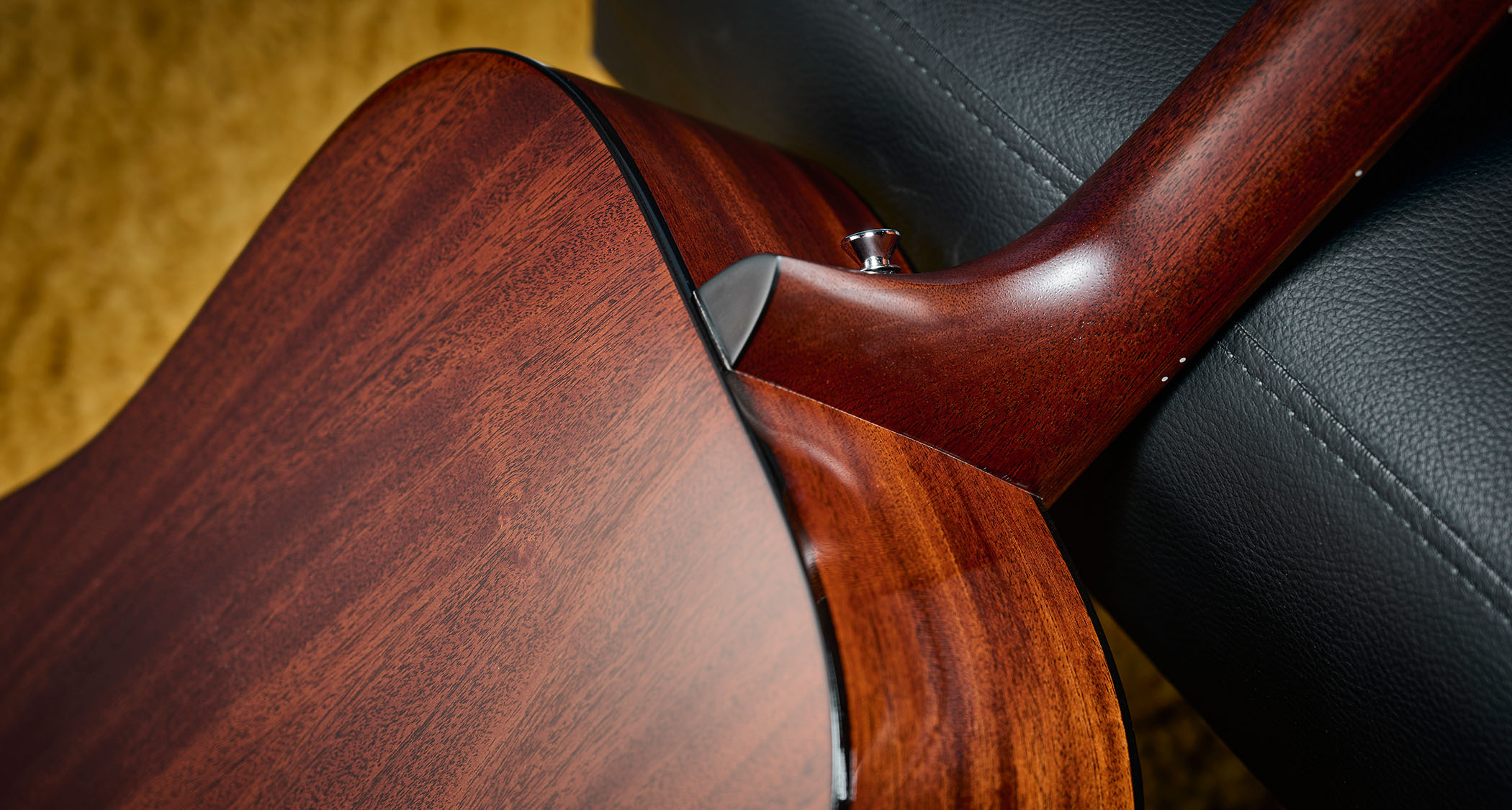
With back and sides of solid mahogany, a tinted and torrefied spruce top with scalloped bracing, and what Martin describes as ‘select hardwood’ for the neck, it’s a recipe that has generated fine acoustic guitar tones since Martin first combined the ingredients in dreadnought guise back in 1931.
By the way, the neck’s ‘select hardwood’ reference means it could be genuine mahogany, Spanish cedar, nato or any similar available timber that Martin has in its current stockpile. It’s attached to the body with a traditional mortise and tenon joint, and satin finished in dark mahogany stain.
The body is natural gloss save for the top’s tinted toner; it’s most likely urethane, but it appears pretty thin-skinned and not at all shiny or plastic looking. It’s great, too, to see the use of quality Grover open-geared tuners, which add to the guitar’s understated but classy vintage vibe.
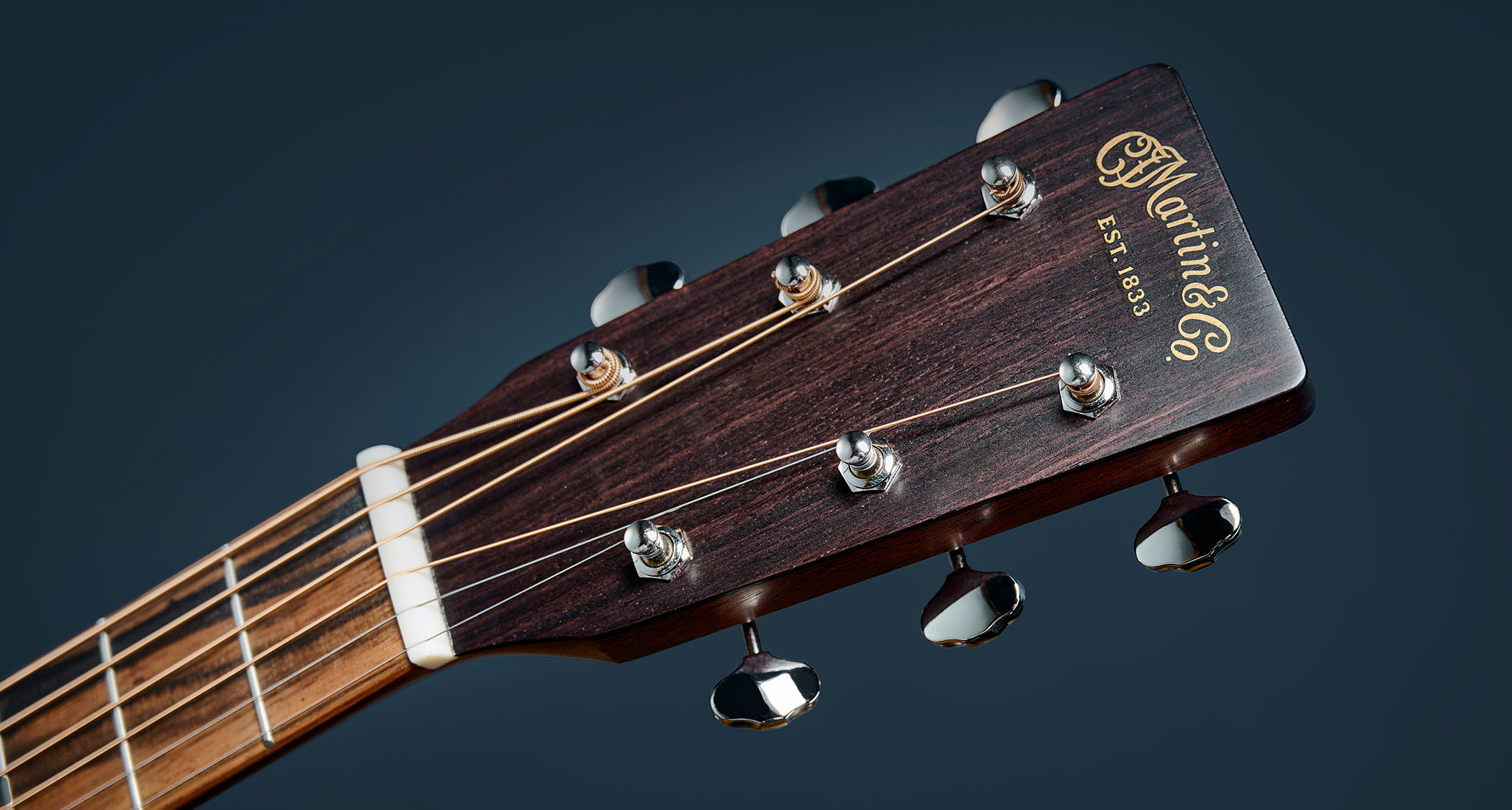
Other details include white Corian nut and Tusq saddle, rosewood headstock facing with water-transfer Martin logo in old-style script, faux-tortoiseshell pickguard, and subtle binding and soundhole rosette.
What’s not at all vintage is the onboard E1 pickup and preamp with built-in chromatic tuner. A useful feature is that, when plugged in, the tuner shuts off the output for silent operation on stage (although the guitar doesn’t need a jack plug inserted to activate it).
A clear digital read-out faces the player from the far side of the soundhole, while on the upper edge we find volume and tone rotaries, plus a phase reversal switch for feedback suppression and a bit of bass boost. There’s a separate input socket on a plastic escutcheon housing the end-pin and a flip-up battery compartment, plus you’ll find a second strap button on the heel’s underside so your Retro Plus is ready to go.
Specs
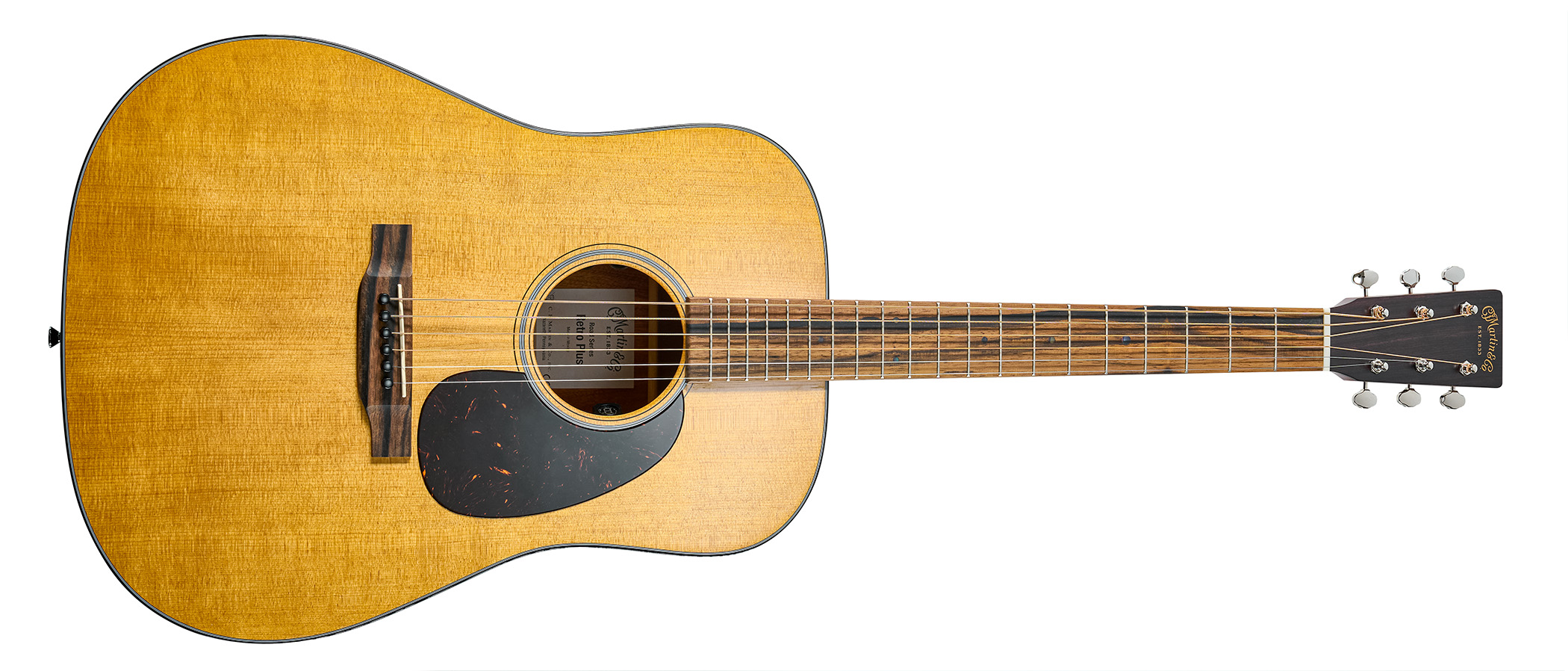
- PRICE: $1,899/£1,899 (with padded gig-bag)
- ORIGIN: Mexico
- TYPE: Non-cutaway acoustic-electric
- TOP: Torrefied spruce
- BACK/SIDES: Solid mahogany
- MAX RIM DEPTH: 107mm
- MAX BODY WIDTH: 406mm
- NECK: Select hardwood, Performing Artist profile w/ High Performance taper
- SCALE LENGTH: 645.2mm (25.4”)
- TUNERS: Grover butterbean ‘Waverley’ open-back style
- NUT/WIDTH: White Corian/44.45mm
- FINGERBOARD: Unbound ebony (light toned w/ dark streaks), with faux abalone dot inlays
- FRETS: 20, fine gauge
- BRIDGE/SPACING: Modern belly style in streaky ebony w/ white Tusq/54.8mm
- ELECTRICS: Martin E1 pickup/preamp w/ volume and tone controls, phase switch and electronic tuner
- WEIGHT (kg/lb): 2.086/4.6
- OPTIONS: None
- RANGE OPTIONS: Martin 000E Retro Plus ($/£1,899) – all specs as DE other than smaller 000 body and shorter 632.6mm (24.9”) scale length
- LEFT-HANDERS: Yes
- FINISH: Gloss top (with ageing toner) back and sides; satin finish to neck
- CONTACT: Martin Guitar
Playability and sounds
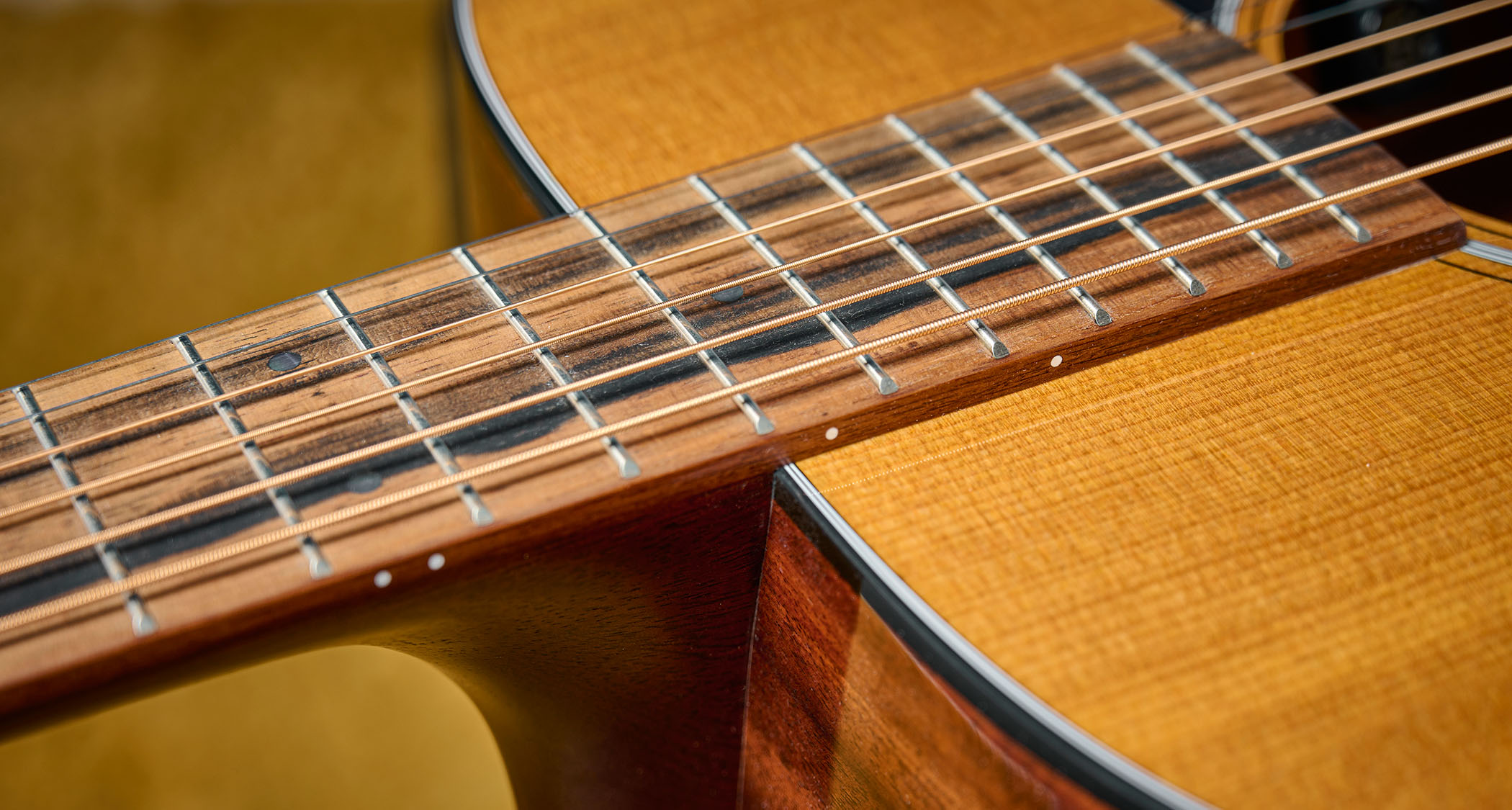
From inception, the Retro Plus was designed for super-comfortable and super-efficient playing. We’ve long been fans of the Performing Artist neck profile with High Performance taper. It’s a comfy medium-to-shallow C shape, around 21mm (1st fret) and 23mm (10th), whose width narrows from just under 54mm at the 12th fret down to 44.45mm at the nut.
Designed for effortless playability in almost any style, the guitar’s 645.2mm (25.4-inch) scale length also provides a fast and snappy tone that the mahogany body, with its thermally aged spruce top, projects warmly on to your audience.
There’s definitely something to be said for our guitar’s torrefied top and scalloped X-bracing. Right out of its dark-grey Martin padded bag it sounds completely played in, with not a hint of sharpness or ‘budget guitar’ brashness (not that this is exactly a budget guitar). And whether picked or strummed, the Retro Plus kicks out a rich and wholly satisfying tone that punches well above its pay grade.
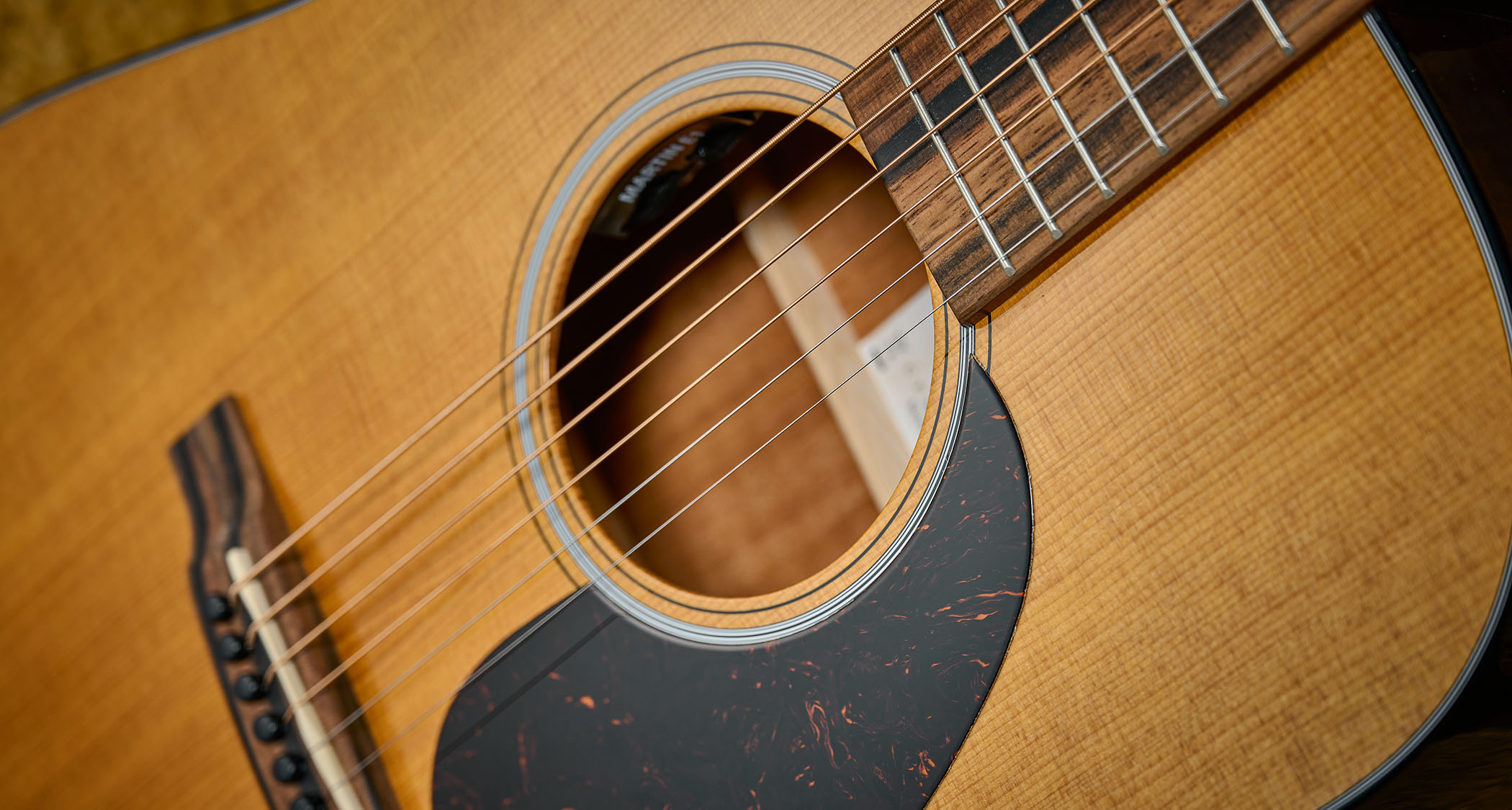
As for the E1 pickup/preamp, while no LR Baggs HiFi Duet, it’s an all-encompassing system that does a fine job of amplifying the Retro’s natural acoustic tone. Your front-of-house engineer or that open-mic audience are unlikely to complain.
The instrument is beautifully set up, too, and that wide nut is perfect for dextrous folk forays or fingerpicked instrumental passages in open tunings. But as a big, bold strummer the dreadnought is pretty much peerless, and the Retro Plus matches almost anything we’ve played in quite a while. It’s a most impressive beast and an extremely likeable guitar.
Verdict
Verdict: ★★★★½

While $/£100 or so below two grand is hardly cheap, in Martin terms it represents serious value for money.
An instrument that we just couldn’t put down
Chris Martin saw many of his competitors making guitars based on his company’s own original designs but undercutting these premium instruments by handsome margins. He decided to do something about it and so the Retro Plus was born.
The use of quality timbers, including that torrefied spruce top, plus fantastically playable necks and a simple but solid pickup system work hand in hand to create an instrument that we just couldn’t put down.
Guitar World verdict: Nothing about it says ‘budget’. Instead, you simply feel proud to hold it in your hands – a real Martin and one based on one of the most successful acoustic guitar designs in history. And to answer that question you haven’t even asked us: yes, almost two centuries of guitar building knowhow really does show!
Hands-on videos
Alamo Music Center
Empire Music
- Best high-end acoustic guitars 2025: 10 of the most lust-worthy instruments for guitarists
- This article first appeared in Guitarist. Subscribe and save.







